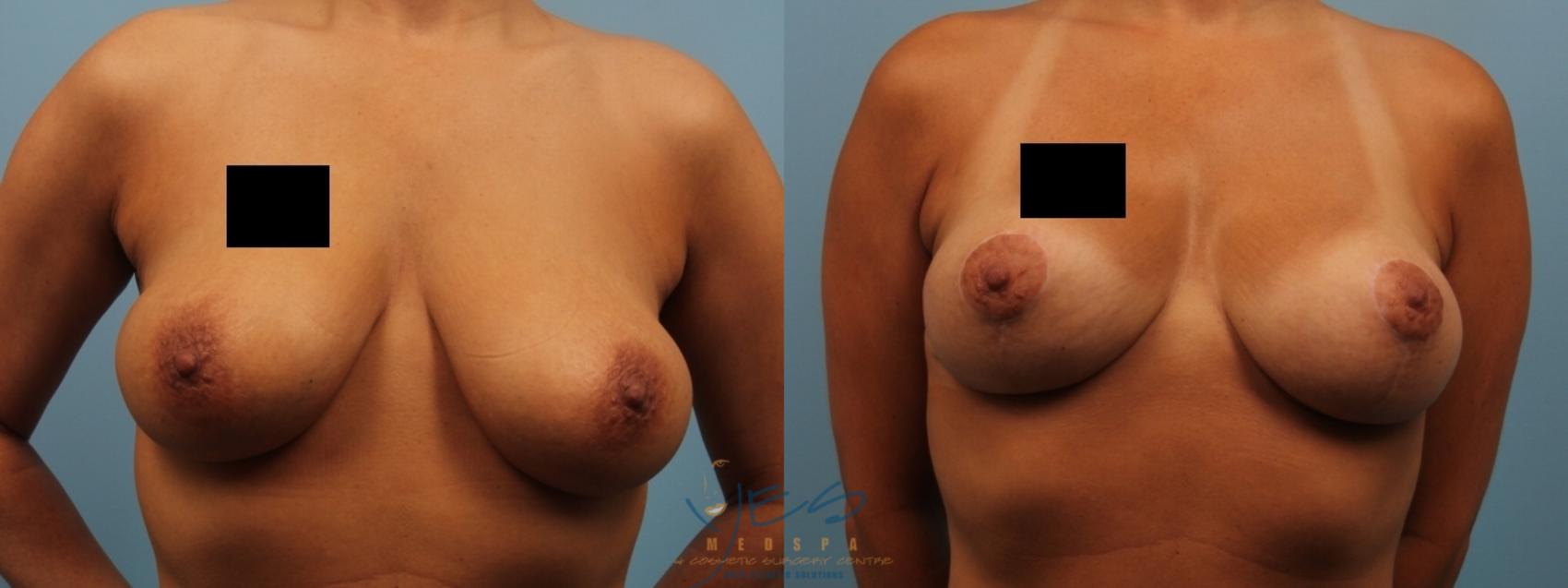Undergoing breast lift surgery can be a transformative experience, offering renewed confidence and a more youthful breast appearance. Breast lifting surgery is designed to repackage your own breast tissue, reposition the nipple to the center of the breast and provide a more youthful position on the chest. Although the surgery itself is the ‘main event’, the journey doesn’t end when you leave the operating room; the recovery period is an essential part of the process, requiring careful planning and attention.
Preparing for Breast Lift Recovery
Preparing for your breast lift recovery can reduce a lot of the stress you may feel about undergoing cosmetic surgery. Before your surgery:
- Stock up on comfortable, button-up shirts that don’t require lifting your arms to put on.
- Prepare a recovery area in your home with pillows to prop yourself up, entertainment options, and easy access to necessities.
- Fill prescriptions in advance and arrange for someone to help you for the first few days after your surgery.
- Prepare meals in advance or have easy-to-make food options on hand to make your recovery smoother.
Week by Week Recovery Timeline
Week 1
The first week after your breast lift is critical for optimal healing. The first 2-4 days will be the most challenging, so make sure you have a caregiver at home to support you. You’ll likely experience mild – moderate discomfort, with swelling and bruising during the first week. Getting enough rest and staying diligent with your medication schedule should be a priority.
You’ll be wearing a surgical bra to support your breasts and minimize swelling. We recommend you sleep on your back with your head elevated for the first week. After 7-10 days, you should be able to return to a low activity desk job.
Week 2
By the end of the second week, you should notice a significant reduction in discomfort and swelling. Many patients feel well enough to return to most daily activities, provided it doesn’t involve strenuous physical effort. However, continue to avoid bending, lifting heavy objects, and vigorous movements.
Your incisions will typically fully heal around the two-week mark, and scar management techniques will be introduced at this time. Continue wearing your supportive garment as directed by your surgeon.
Weeks 3-4
As you enter the third and fourth weeks of recovery, you’ll likely feel more like yourself. You will be able to resume light activities, such as neighborhood walks, as long as they are not strenuous or cause you to break a sweat. You are required to keep you heart rate low until 6 weeks post-surgery.
At this point, you may be cleared to sleep in other positions and wear different bras, however consult with your surgeon first, as this changes based on your specific healing timelines.
Weeks 6-7
You will be seen in office around the 6 week mark to assess your healing. At this time additional scar care is introduced and activity restrictions are lifted. You can gradually return to exercise at this time, limiting chest focused exercises. Supportive bra wear is encouraged to stave off the effects of gravity, but surgical compression bras are no longer required. These timelines are similar for breast augmentation, but all timelines are customized for each patient and their healing needs.
Read more about the difference between a lift and breast augmentation.
Breast Lift Before and After Photos
You can see additional breast lift before and after photos in our gallery.
Tips for Minimizing Discomfort During Recovery
If you’re wondering how much discomfort is involved with a breast lift recovery, the good news is that most patients find the discomfort “less than expected”. There are some ways to manage your discomfort during your recovery. You should:
Use cold compresses: Applying cold packs (wrapped in a towel) to your breasts can help reduce swelling and discomfort.
Keep incisions clean: Follow your surgeon’s guidelines for incision care to prevent infection and promote proper healing.
Take prescribed medications: Follow instructions for pain management and antibiotics medications. It is important to take your medication on time and as prescribed.
Wear your supportive garment: Your compression bra is crucial for reducing swelling and supporting your breasts during healing.
Stay hydrated: Drinking plenty of water helps flush toxins from your system and promotes healing.
Eat a healthy diet: Focus on feeding your body to help it heal! You may not have much of an appetite on your medication, so having delicious comfort food available is essential.
Use pillows for support: When resting or sleeping, use pillows to prop yourself up and support your arms to minimize strain on your chest.
Wear loose, comfortable clothing: Opt for button-up, zipper, or clasp closure shirts so that you won’t have to lift your arms overhead.
Getting Started
Remember, everyone’s recovery is unique, and it’s essential to follow your surgeon’s specific instructions. Don’t hesitate to contact us if you have any concerns or unusual symptoms during your recovery period. You can request a consultation using the online form, or call us at (604) 888-9378 to schedule an appointment.








Leave a Reply